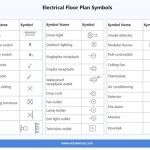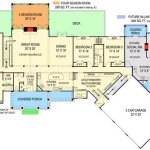Large Insulated Dog House Plans: A Comprehensive Guide
Providing adequate shelter for a dog, especially a large breed, requires careful consideration. A large, insulated dog house offers protection from the elements, ensuring the dog's comfort and well-being year-round. While commercially available dog houses exist, building one from scratch allows for customization to the dog's specific needs and the surrounding environment. Many free plans are available online, providing a cost-effective solution for responsible pet owners. This article will explore key considerations when selecting and implementing large insulated dog house plans, focusing on design elements, insulation strategies, and construction techniques.
Selecting the Right Plans: Evaluating Size and Design
The first step in building a large insulated dog house is selecting appropriate plans. The size of the dog is a primary factor in determining the dimensions of the house. The dog should be able to comfortably stand, turn around, and lie down inside. Measure the dog's height at the withers (the highest point of the shoulders), and add a few inches to determine the minimum height of the dog house. Similarly, measure the dog's length from nose to tail base when standing, and add space for easy turning. Online resources offer charts and calculators to assist in determining appropriate dimensions based on breed and weight. Always err on the side of slightly larger rather than smaller, ensuring ample space for movement and comfort.
The design of the dog house is another crucial aspect to consider. Several designs are available, each offering different advantages. A simple rectangular or A-frame design is relatively easy to construct and provides adequate shelter. However, a design incorporating an offset entryway can significantly improve insulation. By positioning the door to one side, direct wind and rain are less likely to enter the sleeping area. A covered porch or extended roof overhang can further enhance weather protection. Consider the local climate when selecting a design; regions with heavy snowfall may benefit from a sloped roof to prevent snow accumulation, while areas with strong winds may require a more robust and aerodynamic structure.
Free plans often provide detailed diagrams, material lists, and step-by-step instructions. Before committing to a plan, carefully review all aspects to ensure it aligns with your skill level and available resources. Look for plans that include clear measurements and specifications for each component, as well as guidance on insulation and ventilation. Some plans may also incorporate features such as removable floors for easy cleaning or windows for natural light. Consider the overall aesthetic appeal of the dog house and how it will blend into the surrounding landscape.
Effective Insulation Techniques: Optimizing Temperature Control
Insulation is critical for maintaining a comfortable temperature inside the dog house, protecting the dog from both extreme heat and cold. Several insulation options are available, each with varying levels of effectiveness and cost. Rigid foam insulation, such as polystyrene or polyisocyanurate, is a popular choice due to its high R-value (a measure of thermal resistance), ease of installation, and moisture resistance. These panels can be cut to fit the interior walls, roof, and floor of the dog house, providing a continuous layer of insulation. Spray foam insulation offers excellent coverage and fills gaps and cracks effectively, further reducing heat loss and gain. However, it can be more expensive and may require professional installation.
Fiberglass insulation batting is another option, although it is less moisture-resistant than rigid foam. If using fiberglass, ensure it is properly sealed within the walls to prevent moisture absorption and potential health risks to the dog. Reflective bubble wrap insulation can also be used in conjunction with other insulation materials to further enhance thermal performance. This type of insulation reflects radiant heat, helping to keep the dog house cool in the summer and warm in the winter.
Proper ventilation is essential in conjunction with insulation. While insulation helps to retain heat in the winter, it can also trap moisture and lead to condensation. Ventilation allows for air circulation, preventing moisture buildup and maintaining a healthy environment for the dog. Small vents can be installed near the roof or along the sides of the dog house to promote airflow. These vents should be strategically placed to prevent drafts while allowing for adequate ventilation. A simple adjustable flap over the entrance can also help to regulate airflow and temperature. In extremely cold weather, the entrance can be partially closed to reduce heat loss, while in warmer weather, it can be fully opened for maximum ventilation.
The floor of the dog house should also be insulated to prevent heat loss through the ground. A layer of insulation can be placed beneath the floorboards, or a raised platform can be constructed to create an air gap between the floor and the ground. This air gap acts as an additional layer of insulation, further reducing heat loss. Bedding, such as straw, blankets, or dog beds, should be provided to create a comfortable and insulating sleeping surface.
Construction Considerations: Materials, Assembly, and Durability
Selecting durable and weather-resistant materials is crucial for the longevity of the dog house. Untreated wood can rot and decay over time, particularly in damp or humid climates. Pressure-treated lumber is a good option for the frame and base of the dog house, as it is resistant to rot, insects, and decay. However, pressure-treated lumber contains chemicals that can be harmful to dogs if ingested. Therefore, it is essential to ensure that the treated wood is properly sealed and that the dog does not have access to chew on it.
Exterior siding options include plywood, cedar, and vinyl siding. Plywood is a cost-effective option, but it should be treated with a waterproof sealant to prevent water damage. Cedar is a naturally weather-resistant wood that offers a more aesthetically pleasing appearance. Vinyl siding is durable, low-maintenance, and resistant to rot and insects. The roof should be constructed from a waterproof material such as asphalt shingles, metal roofing, or rubber roofing. These materials will protect the dog house from rain, snow, and sun. Ensure the roof is properly sloped to allow for water runoff and prevent pooling.
Assembly of the dog house should follow the instructions provided in the chosen plan. Use appropriate fasteners, such as screws and nails, to ensure a secure and stable structure. Pre-drilling holes can prevent wood from splitting and make assembly easier. Pay attention to detail and ensure all joints are properly sealed to prevent water infiltration. The entrance should be large enough for the dog to easily enter and exit, but not so large that it allows for excessive heat loss or gain. Consider adding a lip or threshold at the entrance to prevent drafts and keep bedding inside.
Durability is paramount when constructing a dog house. Reinforce all corners and joints with additional supports to withstand the dog's movements and potential wear and tear. Regularly inspect the dog house for signs of damage, such as cracks, rot, or loose fasteners. Repair any damage promptly to prevent further deterioration. Cleaning the dog house regularly will help to prevent the buildup of bacteria and odors. A removable floor can make cleaning easier. Locate the dog house in a well-drained area to prevent water from accumulating around the base. Providing a solid and well-insulated dog house will ensure the dog's comfort and protection for years to come.
Ultimately, the success of a large insulated dog house project hinges on careful planning, precise execution, and a commitment to providing a safe and comfortable environment for the dog. By considering size and design, implementing effective insulation techniques, and prioritizing durability in construction, pet owners can create a haven that protects their canine companions from the harshest elements.

Large Dog House Plans Free Construct101

14 Diy Dog Houses How To Build A House Plans Blueprints

Dog House Plans Free Diy Projects Construct101

Cold Weather Dog House Plans Bradshomefurnishings Winter Insulated Diy

Diy Insulated Dog House Build

Insulated Dog House Plans Free Garden How To Build Projects

How To Build A Custom Insulated Dog House Ron Hazelton

Dog House Plans With Porch
:strip_icc()/Beautiful-Pallet-Dog-House-with-Veranda-1-5a202f90494ec90037893a82.jpg?strip=all)
14 Free Diy Dog House Plans Anyone Can Build

Large Dog House Step By Plans Howtospecialist How To Build Diy








